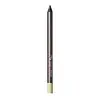Pixi Beauty Hello Kitty Endless Silky Eye Pen Versus Mac Cosmetics Colour Excess Gel Pencil Eye Liner
What's inside
What's inside
 Key Ingredients
Key Ingredients

 Concerns
Concerns

 Ingredients Side-by-side
Ingredients Side-by-side

Isododecane
EmollientSynthetic Wax
AbrasiveMica
Cosmetic ColorantCalcium Sodium Borosilicate
Hydrogenated Polydicyclopentadiene
PEG/PPG-18/18 Dimethicone
EmulsifyingPolybutene
Glyceryl Tribehenate/Isostearate/Eicosandioate
EmollientNylon-12
Polyethylene
AbrasivePerfluorononyl Dimethicone
Skin ConditioningPolyglyceryl-4 Diisostearate/Polyhydroxystearate/Sebacate
EmulsifyingSynthetic Beeswax
Emulsion StabilisingSilica
AbrasivePentaerythrityl Tetra-Di-T-Butyl Hydroxyhydrocinnamate
AntioxidantCopernicia Cerifera Cera
EmollientTin Oxide
AbrasiveCI 77891
Cosmetic ColorantCI 77499
Cosmetic ColorantIsododecane, Synthetic Wax, Mica, Calcium Sodium Borosilicate, Hydrogenated Polydicyclopentadiene, PEG/PPG-18/18 Dimethicone, Polybutene, Glyceryl Tribehenate/Isostearate/Eicosandioate, Nylon-12, Polyethylene, Perfluorononyl Dimethicone, Polyglyceryl-4 Diisostearate/Polyhydroxystearate/Sebacate, Synthetic Beeswax, Silica, Pentaerythrityl Tetra-Di-T-Butyl Hydroxyhydrocinnamate, Copernicia Cerifera Cera, Tin Oxide, CI 77891, CI 77499
Isododecane
EmollientPolymethylsilsesquioxane
Candelilla Wax Hydrocarbons
Synthetic Wax
AbrasiveTrimethylsiloxysilicate
EmollientCopernicia Cerifera Wax Extract
Hydrogenated Polydicyclopentadiene
Dipentaerythrityl Pentaisononanoate
EmollientTrihydroxystearin
Skin ConditioningSynthetic Beeswax
Emulsion StabilisingDisteardimonium Hectorite
StabilisingPropylene Carbonate
SolventCopernicia Cerifera Wax
Silica
AbrasiveSynthetic Fluorphlogopite
Tin Oxide
AbrasiveAlumina
AbrasiveBenzyl Alcohol
PerfumingPentaerythrityl Tetra-Di-T-Butyl Hydroxyhydrocinnamate
AntioxidantCI 77499
Cosmetic ColorantMica
Cosmetic ColorantCI 77510
Cosmetic ColorantCI 77266
Cosmetic ColorantCI 77891
Cosmetic ColorantIsododecane, Polymethylsilsesquioxane, Candelilla Wax Hydrocarbons, Synthetic Wax, Trimethylsiloxysilicate, Copernicia Cerifera Wax Extract, Hydrogenated Polydicyclopentadiene, Dipentaerythrityl Pentaisononanoate, Trihydroxystearin, Synthetic Beeswax, Disteardimonium Hectorite, Propylene Carbonate, Copernicia Cerifera Wax, Silica, Synthetic Fluorphlogopite, Tin Oxide, Alumina, Benzyl Alcohol, Pentaerythrityl Tetra-Di-T-Butyl Hydroxyhydrocinnamate, CI 77499, Mica, CI 77510, CI 77266, CI 77891
Ingredients Explained
These ingredients are found in both products.
Ingredients higher up in an ingredient list are typically present in a larger amount.
Ci 77499 is also hydrated iron III oxide. It is created from mixing red and black iron oxides. This helps give shades of darkness to a product.
Iron III oxides are classified as inorganic chemicals for coloring.
Ci 77891 is a white pigment from Titanium dioxide. It is naturally found in minerals such as rutile and ilmenite.
It's main function is to add a white color to cosmetics. It can also be mixed with other colors to create different shades.
Ci 77891 is commonly found in sunscreens due to its ability to block UV rays.
Learn more about CI 77891We don't have a description for Hydrogenated Polydicyclopentadiene yet.
Isododecane is a fragrance, emollient, and solvent.
As an emollient, it helps your skin stay soft and hydrated. Emollients help trap moisture into your skin.
Isododecane's role as a solvent makes it a great texture enhancer. It spreads smoothly on skin and does not leave a sticky feeling behind. Isododecane also helps prevent color transfer in makeup products.
Isododecane is not absorbed into skin.
Learn more about IsododecaneMica is a naturally occurring mineral used to add shimmer and color in cosmetics. It can also help improve the texture of a product or give it an opaque, white/silver color.
Serecite is the name for very fine but ragged grains of mica.
This ingredient is often coated with metal oxides like titanium dioxide. Trace amounts of heavy metals may be found in mica, but these metals are not harmful in our personal products.
Mica has been used since prehistoric times throughout the world. Ancient Egyptian, Indian, Greek, Roman, Aztec, and Chinese civilizations have used mica.
Learn more about MicaPentaerythrityl Tetra-Di-T-Butyl Hydroxyhydrocinnamate (long name, huh?) is a synthetic antioxidant.
It is used to help stabilize other antioxidants or prevent the color from changing in a product.
As an antioxidant, it helps fight free-radical molecules. Free-radical molecules are capable of damaging our cells and other genetic material. Thus, antioxidants may reduce the signs of aging.
This ingredient is oil-soluble.
Learn more about Pentaerythrityl Tetra-Di-T-Butyl HydroxyhydrocinnamateSilica, also known as silicon dioxide, is a naturally occurring mineral. It is used as a fine, spherical, and porous powder in cosmetics.
Though it has exfoliant properties, the function of silica varies depending on the product.
The unique structure of silica enhances the spreadability and adds smoothness, making it a great texture enhancer.
It is also used as an active carrier, emulsifier, and mattifier due to its ability to absorb excess oil.
In some products, tiny microneedles called spicules are made from silica or hydrolyzed sponge. When you rub them in, they lightly polish away dead skin layers and enhance the penetration of active ingredients.
Learn more about SilicaSynthetic beeswax is created to be identical in structure to beeswax. It possesses the same occlusive and emulsion properties.
A blend of fatty acid esters, fatty acids, and alcohols are used to create synthetic beeswax. Whether or not this ingredient is vegan depends on the source. Sometimes, lanolin is used for its creation.
This ingredient may not be Malassezia folliculitis, or fungal-acne safe.
Learn more about Synthetic BeeswaxSynthetic Wax is created from fossil fuels such as natural gas. It is used to enhance texture, adjust pH, and as an occlusive.
It may also be used as an abrasive ingredient to exfoliate the skin.
Synthetic Wax may not be fungal acne safe.
Learn more about Synthetic WaxTin Oxide is an inorganic oxide used to add opacity and volume to a product. In nature, it is already found in mineral form. The main ore of tin is an opaque and shiny mineral called casseterite.
Tin Oxide helps remove translucency in a product, or make it more opaque. Besides adding opacity, tin oxide is used for bulking to add volume.